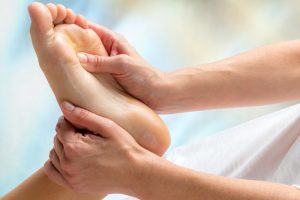
Sciatica is a common ailment that affects many people and is frequently characterized by acute leg pain. The first step in efficient management and alleviation is accurate diagnosis. Wellness centers like zephyr medical help patients relieve their pain. In this educational blog post, we will examine several facets of diagnosing sciatica.
What is Sciatica?
Sciatica is a symptom of a deeper problem and not a medical ailment. This occurs when the sciatic nerve, which travels down each leg from the lower back through the hips, is pinched or irritated. Herniated discs, spinal stenosis, and tight muscles were the most common causes of compression.
Signs and Symptoms
Recognizing the symptoms of sciatica is the first step toward diagnosis. The distinguishing signs include the following.
1. Pain:
A piercing, shooting pain that travels from the lower back down one leg. Slight to severe pain may occur.
2. Numbness and Tingling:
In the leg or foot, you can feel numb or “pins and needles”-like tingling.
3. Muscle Weakness:
Affected-leg weakness makes it difficult to walk, stand, or lift objects.
4. Pain aggravation on movement
When coughing, sneezing, sitting still for a long time, or engaging in activities that require bending or lifting, your sciatic pain frequently worsens.
Diagnosis
1. Medical History
A thorough medical history will be obtained by a healthcare practitioner. They will inquire about their symptoms, their origin, their intensity, and any circumstances that may have contributed to their onset or progression. It is crucial to mention any prior wound or procedure.
2. Physical Evaluation
Physical examination is necessary to evaluate the reflexes, muscle strength, and mobility. Your healthcare professional may carry out particular procedures to pinpoint the cause of your discomfort and decide whether sciatica is to be blamed.
3. Imaging Research
Imaging studies are frequently performed to confirm the diagnosis and determine the underlying cause of sciatica. Typical imaging procedures include the following steps:
• X-rays: It helps visualize the alignment of the spine and rule out conditions, such as fractures or tumors.
• Magnetic Resonance Imaging (MRI): This is a powerful tool for detecting herniated discs, spinal stenosis, or nerve compression.
• Computed Tomography (CT): In some cases, a CT Scan: In may be used to provide detailed images of the spine.
4. Electromyography (EMG) and Nerve Conduction Studies
If necessary, the healthcare provider may recommend EMG and nerve conduction studies to assess nerve function and pinpoint the location of the problem along the sciatic nerve.
5. Differential Diagnosis
It is crucial to rule out other conditions that can mimic sciatica symptoms, such as muscle strain, hip joint problems, or sacroiliac joint dysfunction.
6. Collaborative Approach
Diagnosis of sciatica often involves a collaborative approach, with primary care physicians, orthopedic specialists, and neurologists working together to provide an accurate diagnosis and develop a suitable treatment plan.


